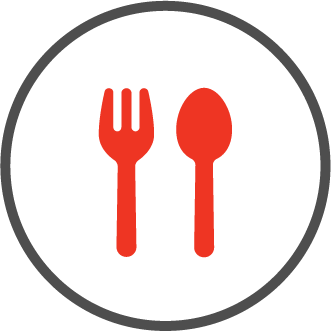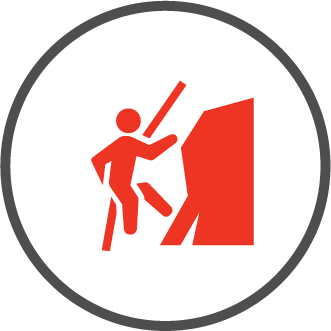The Perfect 7-Day Copenhagen Itinerary

It only took my wife and me a few days into our two-month stay in Copenhagen to see why the city is consistently named the happiest place on the planet. There is a freshness that washes over you soon after you arrive. Locals leap into the crisp waters of its harbor and canals year-round, cyclists of all ages zip along protected bike highways, and chefs serve mouthwatering meals from local ingredients. We couldn’t stop smiling.
This engaging culture plays out against the background of a city that consistently sets new standards in architecture, sustainability and social progress. Radiating out from its city center are vibrant neighborhoods and green spaces connected by an award-winning public transit system. After spending a week here, you will understand why its residents brim with hygge, a Danish term loosely meaning contentment and well-being.

Day 1:

Stay: Hotel Sanders. Located just down the block from The Royal Theater, this serene retreat in the bustling center of Copenhagen is the ideal spot to begin your visit. Each of the 54 rooms at the Hotel Sanders spread across three 19th-century townhouses, radiates a mid-century Danish cool that pairs perfectly with their smiling staff. Plush lounge chairs, a complimentary minibar and a spacious bathroom with a walk-in shower allow you to recharge when you enter your room. While there are many spots to kick back inside its walls, the lush Tata cocktail bar is a must-visit. When you’re ready to venture out, ask for one of their loaner bikes.

Explore: Sitting astride two coastal islands, Zealand and Amager, Copenhagen has been intrinsically linked to the sea since the time of the Vikings. A vital harbor for ships traveling between the North and Baltic seas, it developed into a Scandinavian economic powerhouse. As one of the last major cities in Europe to tear its city walls down at the end of the 19th century, Copenhagen created a distinct city center filled with historical buildings surrounded by more spacious modern neighborhoods. Encircling its core, the remnants of its old defensive moats were converted into parks and water features for public use, which act as a distinct border between the old and new.
These days, the central canal that bisects the old city’s heart has been transformed from an industrial harbor into a showcase of modern Danish design and sensibilities. Bike and pedestrian bridges seemingly float over the waterway, chic neighborhoods have sprouted up alongside it, people swim in its waters and its shoreline is a popular gathering spot.

A day cutting through the heart of Copenhagen’s city center is the perfect way to begin understanding all Copenhagen offers. Just a few blocks away from the hotel is colorful Nyhavn. Once a busy commercial port facility, these days, the three-block-long canal is home to plentiful outdoor cafes, bars, shops and the best people-watching in all of Copenhagen. Spend time roaming both sides before jumping on your bike or walking deeper into the old town.
Torvehallerne, one of the city’s gems, is an eight-minute bike ride or a 20-minute walk away. Opened in 2011, its two spacious market halls are filled with small shops selling everything from spices to butchered beef, baking pans to flower bouquets, shellfish to freshly roasted coffee. But it’s the two dozen or so kitchens, bakeries and coffee shops that really grab your attention. Grab a beverage (the drinks at Pavillon de Verre are amazing) and tuck into a few delicacies for a leisurely lunch. The pastries at Albatross & Venner are delicate and delicious.
Just a few blocks away sits Rosenborg Castle and its attendant gardens. Built as a pleasure palace by Christian IV in the early 17th century, it is home to the Danish crown jewels and rooms filled with royal treasures. All of this can be seen during a leisurely tour that will illuminate the power that was once wielded from Copenhagen. Don’t miss strolling through the surrounding King’s Gardens, with their colorful flower gardens.
Pro Tip: Start early this day. A tourist hotspot, Nyhavn only gets more crowded and chaotic as the day stretches on. For the best pictures, hit it early.

Sip: As you return to the Hotel Sanders, make a detour to Støm Bar just off the peaceful Gråbrødre Torv square. An Art Deco beauty, its bartenders and creative cocktails have won many international awards since it opened over a decade ago.

Day 2:

Snack: Like most northern cities where winter darkness reigns for months at a time, the residents of Copenhagen love a great cup of coffee. Located three blocks west of Hotel Sanders and one block from the Happiness Museum, nestled canal side, HANS Coffee offers some of the best cappuccinos and croissants in the city.

Explore: To fully appreciate the dynamic history of Copenhagen and Denmark in general, a day diving into its past and present is recommended. Just across the canal from HANS Coffee, the regal Christiansborg Palace sits. The 800-year-old building, while not a royal residence these days, is home to the Danish Parliament and Supreme Court, plus the official Throne Room and Royal Reception Room. A palace tour will take you through gilded rooms and the stunning tapestries covering the Great Hall.
The Danish Architecture Museum, or DAC, sits only a few blocks away on the main harbor. Resembling a stack of greenish glass blocks, it instantly grabs your eye. It should since it pays tribute to the forward-thinking design ethos emanating from Copenhagen for the last several decades. This willingness to embrace the unfamiliar led UNESCO to name the city the World Capital of Architecture for 2023. Its ever-changing exhibitions highlight the energy behind some of the world’s most intriguing urban and rural designs. Plus, the rooftop café offers excellent views, and a four-story slide makes exiting the structure quite exciting.
The final stop is the Ny Carlsberg Glyptotek Museum, next to the iconic Tivoli Gardens Amusement Park. A favorite of the city’s residents, the museum houses over 10,000 works of art, ranging from ancient Greco-Roman sculpture to French Impressionists. Founded in 1897 by the brewer Carl Jacobson, the son of the founder of the city’s own Carlsberg Breweries, its lush winter garden, with its towering palm trees and immaculate white marble sculptures, alone is worth the price of admission.
Pro Tip: Buy the Copenhagen City Card, an easy-to-navigate phone-based app that works offline. It offers free entrance to 80+ attractions in the city and the surrounding region, plus unlimited public and airport transport. Because it’s entirely digital, it also has relevant information about attractions, such as times of operation and background information. You pay for the number of hours you want it active when you visit the city, and off you go.

Eat: After immersing yourself in history, wrap your day up with a decidedly youthful trend the city has embraced — open-air food halls. Sitting just off the flowing pedestrian/bike bridge connecting Nyhavn and Christianshavn sits the Broens Gadekokken, or Bridge Street Kitchen. From lunchtime until 8 p.m. (the bars stay open later), its blanket of tables is packed with residents and visitors alike enjoying dishes from its 15 food stalls housed in old shipping containers and often nodding to the beats emanating from some DJ’s speakers.

Day 3:

Tour: A quick hour train ride north of the city sits the town of Hillerød and the fairytale-like Fredriksborg Castle, one of the largest Renaissance castles in Europe. Sitting astride three small islands, fronted by an impressive lake and surrounding gardens, it’s a picture-perfect place to visit. Constructed for Christian IV in the 17th century, it served as a retreat for the monarchy until it was ravaged by fire in 1859. These days, it has been painstakingly restored and serves as Denmark’s National History Museum.
Getting there is a cinch. Head to the central train station across from Tivoli Gardens and jump on the M1 train that departs every hour. Once you arrive, jump on a Donkey Republic bike or stroll over to the grounds through the charming streets of Hillerød that offer numerous dining options. There also is a small restaurant in a historic building on the palace grounds, Café Havehuset.
On your return trip, disembark at the Østerport train station. This is your gateway to one of the greenest neighborhoods in Copenhagen, Østerbro. Filled with young families and professionals, its streets are easy to navigate and home to some excellent clothing shops. GOODS offers a selection of the trendiest new Nordic men’s fashions and GANNI, the same for ladies.
Pro Tip: Download the Donkey Republic bike app. This easy-to-use app quickly gives you access to a fleet of electric and regular bikes across Copenhagen and several nearby cities.


Eat: Copenhagen is diligently pursuing its stated goal of becoming the first carbon-neutral city in the world, a goal they hope to achieve by 2025. This desire is perfectly showcased at Gro Spiseri, a rooftop organic farm/restaurant in the heart of Østerbro. Sitting three stories above the street, diners are served at one long table that seats 25 in the middle of a greenhouse surrounded by produce. A team of chefs who have worked in Michelin-starred restaurants like Noma and 108 turn out organic dishes for its five-course season menu, highlighting the New Nordic Cuisine the city is famous for.

Day 4:

Stay: Villa Copenhagen. Opened in 2020 inside the historic Central Post & Telegraph Head Office, the Villa Copenhagen Hotel oozes Danish hygge. Each of its 390 rooms feels like a grand Copenhagen apartment with lofty ceilings, herringbone floors, towering windows and luxurious linens. But its greatest feature, besides its on-site bakery, buzzy bar and cozy brasserie, is the sustainably heated 25m open-air rooftop pool that offers a serene spot to recharge.

Explore: In the last several decades, Copenhagen has done a fantastic job transforming its formerly drab and polluted waterfront into one of its greatest assets. Dive into the city’s pulsing heart today by packing a beach bag and heading to the harbor only a few blocks away. Avoid the prepackaged tour boats that ply its waterways and instead book your own electrically powered boat with Go Boat. Their simple-to-operate boats seat up to eight people and allow you to explore the inner harbor and surrounding canals at your own pace. Best of all, you can grab a picnic basket and a bottle of wine from them and have lunch while cruising.
When you dock, head over to the nearby Island Brygge. There, you can take a dip in one of the complex’s five pools to say you swam in the Baltic Sea waters coursing through the city. There are also three diving towers to leap from for the adventurous, plus an expansive lawn area to soak up the sun.


Do: If you’re feeling even more adventurous, jump on a bike and head over to CopenHill, the epitome of Danish sustainability. Opened in 2019, its artificial ski slope, outdoor climbing wall, hiking trail and café are crowded year-round and sit atop the city’s newest waste management center.

Snack: Floating in the middle of the harbor, the Winter Island complex is yet another structure created to enjoy the waterfront. Open year-round, its numerous saunas are the ideal spot to recover after a day on the water, plus its café serves up local brews, wine and pizzas.

Eat: A trip to Copenhagen wouldn’t be complete without visiting the Reffen Food Hall complex. Located in the formerly industrial district of Refshaleøen, it offers over 50 food stalls serving tastes across the globe. The Argentinian Pepito steak sandwich at Fuego and the Gambian bowls at Bao Bab are amazing.

Sip: If you love great beer, stop into Mikkeller Baghaven, which sits on the waterside beside Reffen. A passion project from Copenhagen’s favorite craft brewer, Mikkeller, it’s home to 12 large oak feoders filled with wild yeast brews that push the envelope of taste. Dive into their beer list for some one-of-a-kind brews.
Pro Tip: Take the Harbor Bus to Reffen and any other waterfront spots you wish. Part of the city’s fantastic transportation network, these yellow boats are electrically powered and offer nine stops.
Day 5:

Tour: In 1971, protesters occupied an abandoned military barracks in the Christianshavn neighborhood of Copenhagen to protest housing shortages. They never left, and these days their street art-coated community is called Freetown Christiana. This self-proclaimed free republic simply must be seen to be appreciated. Filled with homes built from recycled materials, numerous vegetarian restaurants, artisan shops and a fair amount of marijuana smoke, it plays out like a chill fever dream.
The best way to understand it is to book a tour with a local guide to learn its backstory. While no tours are allowed inside the self-governing community, you can book one that starts in the city center and drops you at the gates of Christiania. From there, you can head in and spend as much time as you wish. One word of note: while photography is tolerated, do not attempt it on the area known as Pusher Street. Lined with ramshackle stands where cannabis and often other drugs are sold, it’s hard to miss.


Eat: Just across the train tracks from your hotel sits the funky neighborhood of Vesterbro. Once the city’s notorious redlight district, these days it’s a popular neighborhood for residents. Head over to the Meatpacking District for a rollicking night out. Once home to the city’s meat industry, these days, the older red brick section and the newer muted white section are packed with restaurants, bars and boutiques.
Stop into the buzzy Mikkeller Warpigs Brewpub for a cold brew and Texas-style barbecue, or grab a sourdough crust pizza and negroni at mother Restaurant. If you feel more upscale, book a table at Kødbyens Fiskebar. Its chefs serve tasty seafood dishes (the razor clams are amazing) in a chic industrial-style location.

Day 6:

Explore: Just a quick 40-minute train ride from the Copenhagen Central Train Station (there are numerous trains) sits the town of Roskilde. Once the capital of Denmark and a critical Viking stronghold, the quaint red brick city sits at the end of a scenic fjord. To journey into the past, visit the towering Roskilde Cathedral, a UNESCO World Heritage Site and the final resting place for Denmark’s Kings and Queens for the last six centuries.
From there, head to the Viking Ship Museum to immerse yourself in an essential component of Denmark’s identity. The remains of five Viking ships salvaged from the nearby waters are on display, along with workshops where artisans actively build replicas of Viking ships using only authentic centuries-old tools.
The town is also home to Northern Europe’s largest yearly music festival, the Roskilde Festival. You can garner a taste of what the week-long event has to offer each year by visiting the Ragnarock Museum. Designed to tell the story of youth culture in Denmark, its highly interactive exhibits take you on a decades-long journey.

Eat: Book a seat on the M/S Sagafjord for a tranquil lunch or dinner cruise through the fjord. A converted passenger ferry from the ’50s, its elegant rooms, sundecks and excellent kitchen offer an ideal way to tour the waterways surrounding the city.

Sip: Once you get back to Copenhagen, head over to one of the more unique spots for a beer. The Carlsberg City District is one of the city’s newest neighborhoods. Once the industrial home to the brewing giant whose name it bears, it’s a bustling community these days. Tour the Home of Carlsberg Museum to see the original brewing equipment, marvel at its impressive beer memorabilia collection and sip a cold one after a tour.

Day 7:

Stay: Nimb Hotel. For your last day, transfer to the Nimb Hotel. It offers casual elegance that pairs perfectly with the beautifully manicured grounds of Tivoli Gardens that it overlooks. Each of its 39 rooms blends modern style and comfort alongside a spa, roof terrace with a pool, and quiet nooks to unwind in.

Do: At 180 years old, Tivoli Gardens is the third oldest amusement park in the world, and it deserves a visit. The park’s grounds radiate a relaxed sophistication. Beloved by the city’s residents, folks dine in its excellent restaurants, catch live shows and roam its manicured gardens, especially at night under a blanket of lights. Jump on the Rutschebanen. It’s one of the world’s oldest wooden rollercoasters and is controlled by an operator applying a handbrake, something you rarely see or much less experience these days.
Pro Tip: Staying at the Nimb Hotel grants you access to the park whenever you wish, so hit the grounds early to enjoy its rides. Grab lunch at either the stately Grøften, with its traditional menu served under a canopy of trees, or at Kilden I Haven, where you can enjoy organic Danish ingredients. Then come back when the sun drops to soak up the park’s famous lights.

Shop: Just a few blocks away sits Strøget, one of the largest and longest pedestrian shopping streets in Europe. Stretching 1.1 kilometers, it cuts through a charming neighborhood populated by families and students from the nearby University of Copenhagen. Strolling through, you will find luxury brands like Prada and Max Mara next to more affordable options like Zara and Weekday. When you reach the end, grab a glass of champagne at Balthazar, an elegant bar located streetside at the Hotel D’Angleterre.

Eat: Located a few blocks north of Strøget on the relaxed Norregade Steet, the Olive Kitchen & Bar is delightful. Inside its cozy, unassuming dining room, diners are treated to delicious dishes that skip the pretensions found in some of the city’s more famous establishments. Their bread course alone is worth a visit.







تعليقات
إرسال تعليق